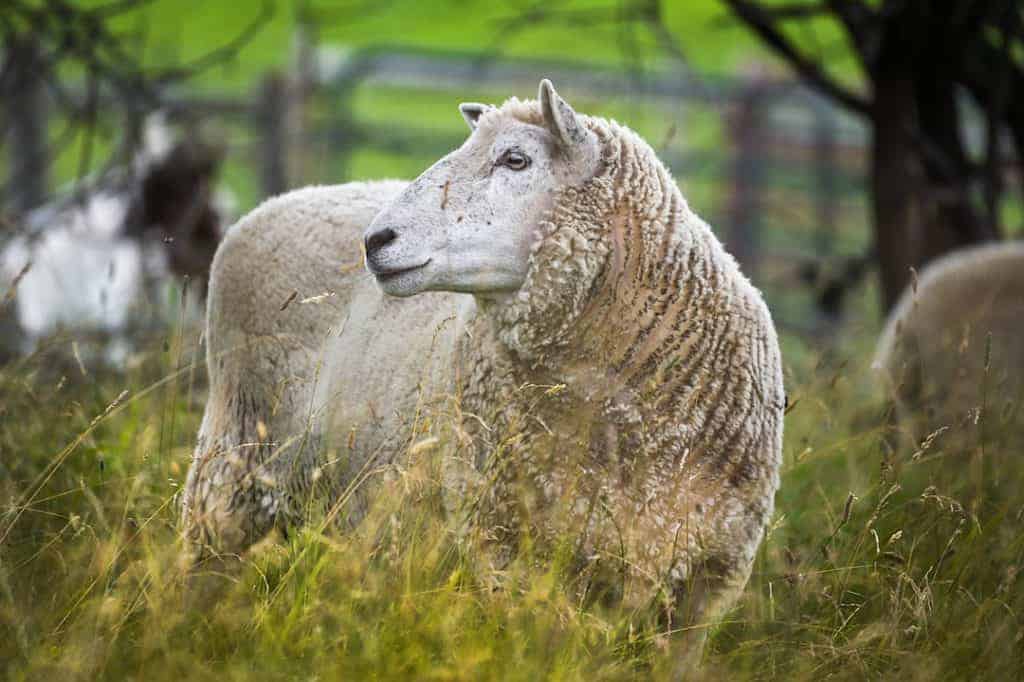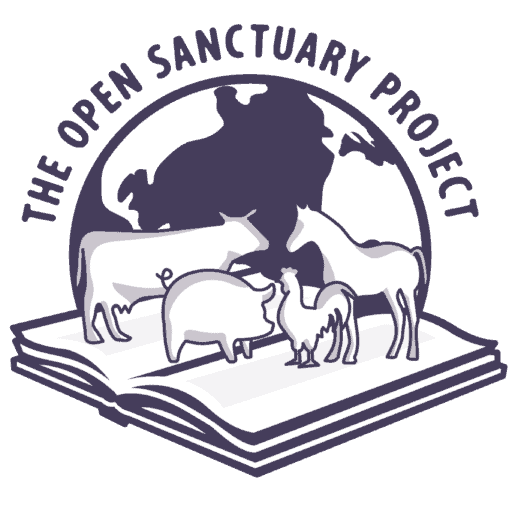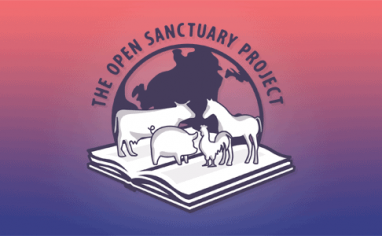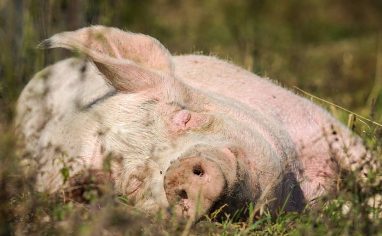
This resource has been fully reviewed and updatedA member of The Open Sanctuary Project’s staff has given this resource a full review and provided updates where necessary. by a member of The Open Sanctuary Project’s staff as of December 10, 2021
Because every resident is a unique individual, it’s difficult to offer specific guidance regarding safe cohabitation with members of other species. However, there are certain species who may be more likely to safely cohabitate than others, and in some cases there are species combinations that are best avoided entirely due to potential safety risks or care needs that are too different. In order to make responsible, informed decisions about living arrangements and social groups for any species at your sanctuary, it’s important to consider who they are, generally, as a species, what their needs and preferences are, and also to consider who they are as an individual. Additionally, you’ll want to think about any safety risks they could potentially pose to another species and vice versa. Below we’ll discuss important things to keep in mind when considering living arrangements and social groupings involving sheep. In addition to the information below, you’ll need to consider the specific needs of the individuals you are considering housing them with.
Consider The Risk Of Highly Pathogenic Avian Influenza Transmission
On March 20, 2024, The Minnesota Board Of Animal Health (MBAH) announced the first detection of highly pathogenic avian influenza (HPAI) in a domesticated ruminant in the U.S. after a goat kidA young goat in Stevens County tested positive. Soon after, HPAI was detected in cowsWhile "cows" can be defined to refer exclusively to female cattle, at The Open Sanctuary Project we refer to domesticated cattle of all ages and sexes as "cows." at dairies in Texas and Kansas and has since been detected in cows in additional states. This is a developing situation. For more information about HPAI in domesticatedAdapted over time (as by selective breeding) from a wild or natural state to life in close association with and to the benefit of humans ruminants, check out our FAQ here.
In general, we think it’s best to house mammalian residents separately from avian residents, but given the current situation with HPAI detections in domesticated ruminants, housing them separately is imperative.
Social Considerations
Sheep are social animals who have evolved to live in flocks with other sheep. Living in flocks can help provide protection from predators, and even in settings where individuals are not at risk of predation, living with other sheep can offer a sense of security. Living in isolationIn medical and health-related circumstances, isolation represents the act or policy of separating an individual with a contagious health condition from other residents in order to prevent the spread of disease. In non-medical circumstances, isolation represents the act of preventing an individual from being near their companions due to forced separation. Forcibly isolating an individual to live alone and apart from their companions can result in boredom, loneliness, anxiety, and distress. or being separated from individuals they are bonded with can cause significant distress. With this in mind, we recommend giving sheep residents the opportunity to live with other sheep whenever possible. However, it’s important to offer residents enough space and resources- overcrowding and competing for resources can result in unhealthy flock dynamics.
If a sheep resident is unable to live with other sheep, it will be important to give them the opportunity to bond with a companion(s) of a different species while ensuring everyone’s safety. Similarly, if due to spatial constraints you are considering housing your sheep residents with residents of another species, you will need to do so thoughtfully.
Further Reading
Sometimes you need to consider separating an individual from their companions due to a health issue. You can read more about considering alternative living arrangements due to a health concern here. Also, be sure to check out Creating An Enriching Life For Sheep for enrichment ideas to utilize during times when someone must be away from their companions.
Dietary Considerations
Sheep, like cows and goats, are ruminants. Some ruminant species are grazers, others are browsers, and some are a mix of both (intermediates). There is some debate as to which category sheep fall into- depending on the source, they might be classified as grazers or intermediates. While some individuals may require supplemental food, a healthy, mature sheep will primarily eat fresh forages in the form of grasses and forbs (herbaceous broadleaf flowering plants) or dried grass hay, and this is the best diet to promote healthy rumen function. Some forages, such as alfalfa, increase the risk of urinary blockages in neutered male sheep and should be avoided or seriously limited. Unless there is a specific reason not to do so, offering unrestricted access to forage is recommended. Therefore, housing sheep with individuals who should not have unlimited access to forage or who require a different type of forage can be challenging.
In addition to forages, sheep typically require supplemental minerals, either in loose or block form. Compared to goats and cows, sheep are much more sensitive to copper and must only be fed mineral formulas that are designed for sheep in order to prevent copper toxicity. This means that if sheep live with goats or cows, the entire group will need to have minerals that are safe for sheep, which could result in deficiency for species with higher copper needs.
Access to concentrates or pelleted food designed for other species can result in gastrointestinal issues, urinary blockages in neutered males, and, depending on the nutritional make-up, toxicity (again, copper is a concern here). Therefore, it will likely be easier to house sheep with other species whose diet consists primarily of fresh or dried forages than it will be to house them with species whose meals consist of pelleted food or concentrates.
For more information on your residents’ dietary needs, check out our species-specific Daily Diet, Treats, And Supplements resources.
Housing Considerations
Indoors, sheep need a place that can keep them cool in the warmer months, warm in the colder months, and that provides plenty of ventilation. Sheep require protection from predators, and in some regions, they may need to spend the night secured within their indoor living spaceThe indoor or outdoor area where an animal resident lives, eats, and rests. in order to keep them safe. If housing them with other species, be sure to consider if there are concerns associated with closing them in with sheep overnight, as individuals will have a harder time getting away from each other (consider both the risk to the sheep and the risk the sheep pose to others). Also keep in mind that while sheep do require protection from predators, and may need to be closed inside overnight, bird residents are vulnerable to a variety of smaller predators that are not a concern for sheep, and therefore require more robust predator-proofing than sheep.
Outdoors, sheep require ample space, ideally with lots of safe foraging opportunities. Sharing pasture space with pigs can be challenging as pigs may root up the land, damaging vegetation and creating terrain that can be challenging to walk on.
Protecting Bighorn Sheep Flocks
While this resource focuses on safe cohabitation with other domesticated species commonly cared for at a farmed animal sanctuaryAn animal sanctuary that primarily cares for rescued animals that were farmed by humans., we’d be remiss if we didn’t mention this important point- if you live in an area with bighorn sheep flocks, be aware that they can contract Mycoplasma ovipneumoniae from domesticated sheep. While the disease typically causes only minor illness in domesticated sheep, it has a very high mortality rate in bighorn populations and can threaten entire flocks. Steps should be taken to prevent any contact with wild flocks both to protect your residents and to protect their wild cousins.
For more information on your residents’ housing needs, check out our species-specific Creating A Good Home resources.
Safety Considerations
When considering mixed-species social groups, be sure to consider any potential safety risks. Depending on personalities, circumstances, and your set-up, housing sheep with larger species such as cows, pigs, or equines could pose a safety risk to sheep, but there’s more than just size differences to consider. A growing calf, while closer in size to a sheep than a mature cowWhile "cow" can be defined to refer exclusively to female cattle, at The Open Sanctuary Project we refer to domesticated cattle of all ages and sexes as "cows.", could pose a safety risk if they are overly playful or if they are a male who may be interested in mounting sheep. Also consider the risk a sheep could pose to smaller residents such as chickens, turkeysUnless explicitly mentioned, we are referring to domesticated turkey breeds, not wild turkeys, who may have unique needs not covered by this resource., ducksUnless explicitly mentioned, we are referring to domesticated duck breeds, not wild ducks, who may have unique needs not covered by this resource., or geeseUnless explicitly mentioned, we are referring to domesticated goose breeds, not wild geese, who may have unique needs not covered by this resource. if they were to accidentally step on them or if the sheep tried to play with the smaller resident.
As a general rule, we don’t recommend housing dogs with sheep. A dog could seriously injure a sheep, either by attacking them outright or by causing them to panic and flee. Additionally, as prey animals, even just the presence of a dog may cause your sheep residents distress, regardless of whether or not they are actually in physical danger. In some instances, there could be risk for the dog as well- a sheep or group of sheep who feels threatened may go after a dog, especially if they feel trapped.
What About “LivestockAnother term for farmed animals; different regions of the world specify different species of farmed animals as “livestock”. Guardians”?
It’s not uncommon to hear about certain species being housed with others in an attempt to protect more vulnerable species from predators. In some cases, this simply entails housing larger species with smaller species, but other times it involves specific species who have been designated by humans as “livestock guardians” such as dogs, donkeys, or llamas. Unfortunately, this practice of relying on other residents to act as deterrents or protectors is not universally reliable and, therefore, is not something we recommend. While you can certainly find folks who advocate strongly for this solution (especially individuals from the farming community), you can also find heartbreaking stories of predator attacks. In addition to the “protected” residents being harmed despite the inclusion of a “guardian” in their living space, in some cases, the “guardian” has been injured or killed by a predator because they were not properly protected either. There have also been reports of “guardian” residents going after the individuals they live with, sometimes with little to no forewarning. We believe that there is simply no substitute for proper housing and fencing when it comes to predator protection, and living arrangements should be informed by the needs of each individual resident, not the role we feel they should play.
Because they have similar (though not identical) care needs and, depending on the breeds, can be similar in size, it is not uncommon for sheep and goats to be housed together. This is an arrangement that can work depending on the individuals involved, but it should not be assumed that sheep and goats can always live safely with one another. While some sheep and goats have become the closest of friends and others have peacefully coexisted even if they didn’t become pals, some sheep and goats simply can’t live together safely. Some goats may be too rough, rambunctious, or confrontationalBehaviors such as chasing, cornering, biting, kicking, problematic mounting, or otherwise engaging in consistent behavior that may cause mental or physical discomfort or injury to another individual, or using these behaviors to block an individual's access to resources such as food, water, shade, shelter, or other residents. to live with sheep, and those with horns could cause serious injury to sheep, even inadvertently. There have been reports of goats, particularly horned goats, causing deep wounds and leg injuries to sheep. Even if injury is not a concern, if your sheep residents seem stressed by living with particular goats, you’ll need to find another living arrangement that keeps everyone safe and happy. It’s also possible that a particular sheep resident may be too rough or confrontational for a particular goat. Because of the potential risks involved, we recommend sanctuaries be prepared to house sheep and goats separately rather than relying on the notion that they can always live together safely, as there is absolutely no guarantee that they can.
Consider The Individuals
In addition to understanding who sheep are and what they need as a species, be sure to consider the specific individuals in your care – thinking about their unique personalities and preferences as well as their health care needs. For example, you may decide that it is best if your sheep residents live only with other sheep, but if you rescue a sheep who is very bonded with a companion who is not a sheep and it seems safe to keep them together, you’ll want to consider the needs of both the sheep and their companion and find a living situation that works for both of them.
There’s a lot to consider when figuring out social groupings for sanctuary residents, and things can get even more complicated when you start thinking about how different species will do together. Be sure to consider the needs of all species and think about whether or not you can meet everyone’s needs and keep everyone safe in a mixed-species group.
SOURCES:
Daily Diet, Treats, And Supplements | The Open Sanctuary Project
Food Requirements For Different Animals | Noble Research Institute
Mycoplasma ovipneumoniae | Washington Animal Disease Diagnostic Laboratory
Social Behavior Of Sheep | Merck Veterinary Manual(Non-Compassionate Source)
Sheep And Goat Medicine, Second Edition (Non-Compassionate Source)
Running With The Herd | Nature (Non-Compassionate Source)
If a source includes the (Non-Compassionate Source) tag, it means that we do not endorse that particular source’s views about animals, even if some of their insights are valuable from a care perspective. See a more detailed explanation here.








